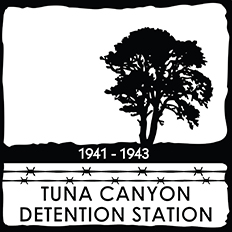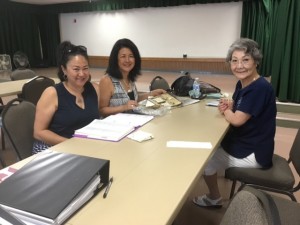Shinsuke “Sam” Sugimoto was born on September 10, 1884, in the Gumma Machi, Kyoto Prefecture of Japan.
A passport stamp shows his arrival in the U.S. in 1906 at age 22. He spent his younger years working and traveling between Japan, Canada, the U.S. and England, where he was employed for a time at the Nestle Co.
Shinsuke met Misao Toyama from the Kumamoto-Ken Prefecture of Japan. They married on July 22, 1918 in Marysville, Calif. where they lived for a decade, along with Misao’s mother, Shigeru Toyama. They built a life together, raising four children: Kathleen, Mary, Roy and Paul. Shinsuke served as Secretary of the Japanese Association of Marysville.
In 1928 the Sugimoto family relocated to the Boyle Heights neighborhood in East Los Angeles, Calif. Over the years, Shinsuke worked in sales at Toyo Printing Company, Nanka Times, Golden State Company, and Imperial Mutual Life Insurance. He also worked at the Boyle Heights YWCA and taught kendo, a Japanese martial art using bamboo swords.
It is believed that because of Shinsuke’s kendo expertise, he was deemed a danger by the U.S. government and was therefore among the earliest detainees arrested after Executive Order 9066 was issued on February 19,1942. He was taken from his family at age 57 to the Tuna Canyon Detention Station in Tujunga, Calif. He wrote that he was arrested so suddenly that he “barely had time to get dressed.” He worried that he’d left the tax return he was working on for a friend unfinished, asking daughter Kathleen to finish it in his absence.
Held for weeks in Tuna Canyon, Shinsuke faced uncertainty about his fate, his health issues and the future wellbeing of his family, with whom he could only communicate via letters, postcards and a few short visitations. On March 12, 1942, he was put on a train to the Department of Justice Santa Fe Internment Camp in New Mexico. He wrote, instructing his eldest son, Roy, to sell the family belongings—they would no longer have use for them because his family would soon be forced from their home into a camp themselves. He asked a family friend to look after them during their “evacuation.”
His wife and family were first sent to the Santa Anita Racetrack—a temporary “assembly center” in Arcadia, Calif.—where they were made to live alongside thousands of other evacuees.
After months apart, Shinsuke was finally reunited with most of his family in the Granada Relocation Center – Amache Camp in Granada, Colo. (His daughter Mary and her husband Yoshio were sent to a camp in Rowher, Ark. They were given an early release to move to Ohio because Yoshio found employment there.)
For nearly three years, the youngest son, Paul, had to get his education through the Amache Camp school, while the family endured day-to-day life in the barracks, dreaming of the moment they could leave. Tragically on March 24, 1945, two months short of his family’s release, Shinsuke died at age 61 while still incarcerated in Amache.
Once released, Misao and the family joined Mary and Yoshio in Ohio. Son Roy remained there, while Paul, Kathleen and her husband Jack moved back to Los Angeles, with Misao and Shigeru following later. Life for the family had forever changed without their beloved husband and father Shinsuke, who never saw the “new life” he had hoped for.
“Take care everybody, avoid quarrels, live without worry, not to think so deep, live like a happy family.”
—Shinsuke “Sam” Sugimoto
9/10/1884 – 3/24/1945


